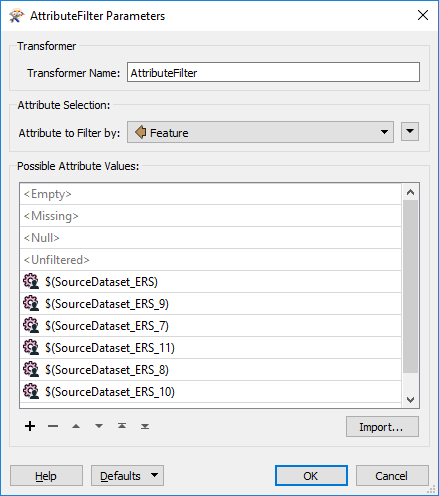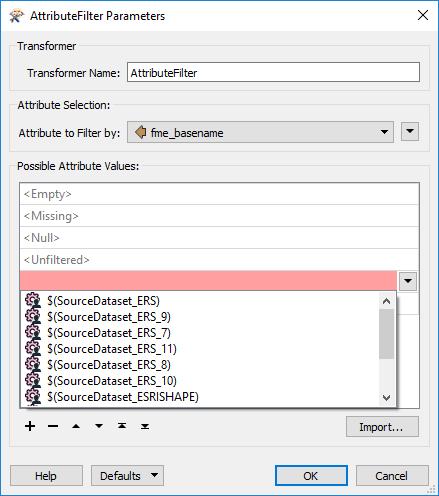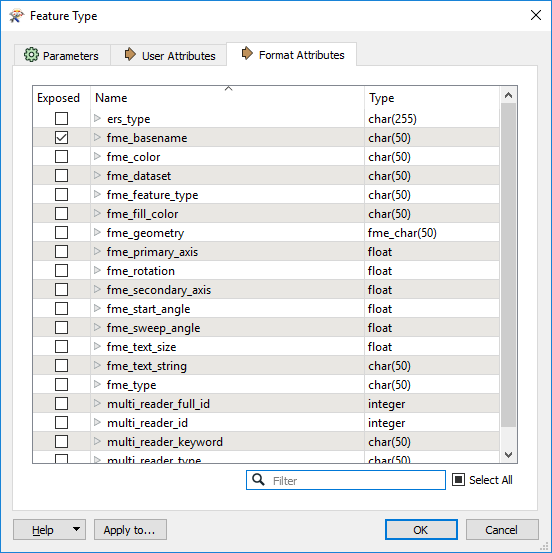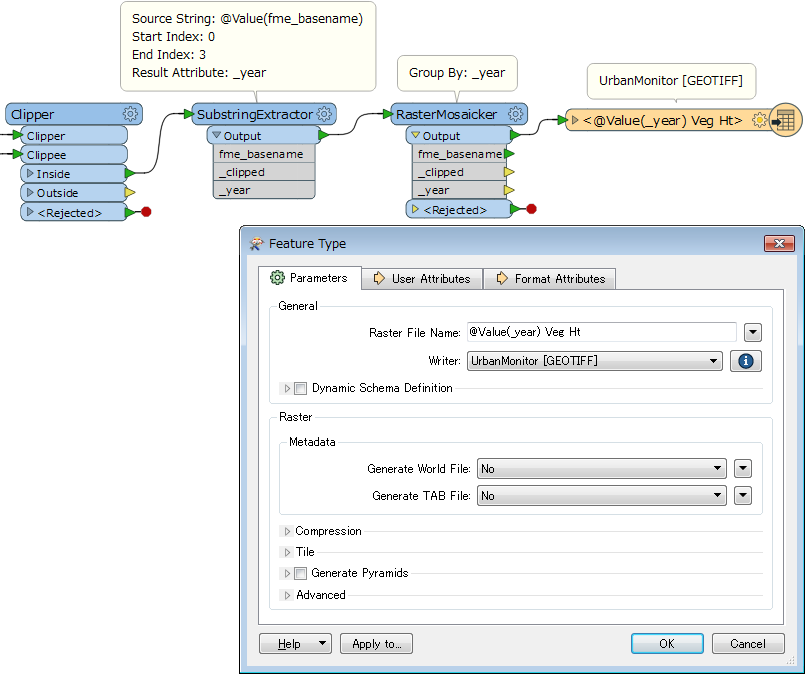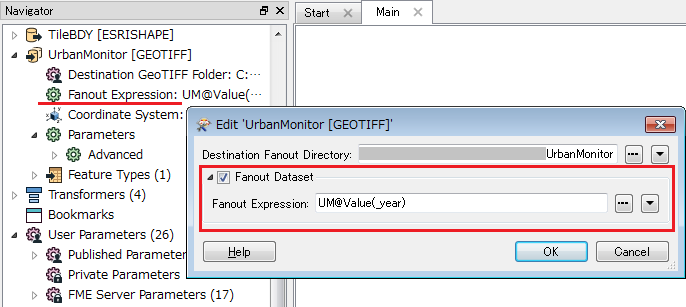There are a number of ways to filter and direct data and attribute filter looked like the one. I expected to have a quick and simple option as all I'm really trying to do is send multiple clipped files to the correct transformers and writers. This is by no means intuitive with no easy way to expose the dataset name and direct it accordingly. Instead of the dataset name (admittedly rather long) I get a selection of random names (Source dataset ERS, source dataset ERS9, etc) which I have to try and match with the dataset name. Even though these appeared as options, this then didn't work and I had to add in an attribute creator before attributefilter would pass the data through. Am I just using this transformer incorrectly?
Question
AttributeFilter - Seems less than intuitive - all I want is to direct different datasets to different writers
This post is closed to further activity.
It may be an old question, an answered question, an implemented idea, or a notification-only post.
Please check post dates before relying on any information in a question or answer.
For follow-up or related questions, please post a new question or idea.
If there is a genuine update to be made, please contact us and request that the post is reopened.
It may be an old question, an answered question, an implemented idea, or a notification-only post.
Please check post dates before relying on any information in a question or answer.
For follow-up or related questions, please post a new question or idea.
If there is a genuine update to be made, please contact us and request that the post is reopened.







